| Srl | Item |
| 1 |
ID:
160373
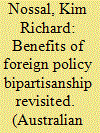

|
|
|
|
|
| Summary/Abstract |
Although foreign policy bipartisanship in Westminster systems is often heralded as a normative good, there is an emerging scholarship which suggests that a bipartisan approach to foreign and defence policy comes with considerable costs. This article seeks to join that debate. It does so by examining two contemporary foreign/defence policy issues in Canadian politics: the mission in Afghanistan from 2001 to 2014 and the efforts to replace the CF-18 Hornet flown by the Royal Canadian Air Force. These two cases do not offer clear conclusions about the normative argument about foreign policy bipartisanship. The embrace of a bipartisan approach to the Afghanistan mission confirms the criticism that bipartisanship can suppress public debate and did indeed distort a consideration of policy options. But the case of the CF-18 replacement suggests that there are significant costs if government and opposition replace a search for bipartisan consensus on key policy issues with an overt politicisation that seeks partisan advantage by ‘playing politics’ with foreign and defence policy issues, concluding that the quality of partisanship is a necessary condition to avoid the dysfunctions and costs of bipartisanship.
|
|
|
|
|
|
|
|
|
|
|
|
|
|
|
|
| 2 |
ID:
155830
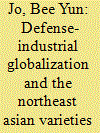

|
|
|
|
|
| Summary/Abstract |
In observation of the first US multilateral collaborative program in advanced fighter-jet production, the F-35 JSF, I analyze the implications of the so-called defense-industrial globalization phenomenon for the Northeast Asian region by examining the fighter-jet acquisition patterns of South Korea, Japan, and Taiwan. I explore the applicability of the Varieties of Defense-Industrial Capitalism (VoDC) model, put forth by Marc R. Devore, which places emphasis on endogenous-institutionalist factors in projecting the adaptation patterns of states to defense-industrial globalization. By revealing theoretical and empirical limitations of the VoDC model when applied to Northeast Asia's fighter-jet industry, I argue that the Northeast Asian varieties of paths are a complex outcome of not only their endogenous settings but also US exogenous influence on the region. I also show that Devore's institutionalist and liberalist thesis on defense-industrial globalization does not hold for the cutting-edge fighter-jet industry where the first-tier states continue to be restrictive in their technology transfers, influencing the fighter-jet acquisition patterns of the three Northeast Asian states.
|
|
|
|
|
|
|
|
|
|
|
|
|
|
|
|
| 3 |
ID:
121239
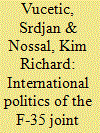

|
|
|
|
|
| Publication |
2013.
|
| Summary/Abstract |
There is a good reason why the F-35 Joint Strike Fighter program is so often
described as the "arms deal of the century." In a report published on the last
day of 2010, the Pentagon estimated lifetime operating and sustainment
costs for the US F-35 fleet-then projected at 2,443 units, not counting
the prototypes-at US$1.45 trillion.1
Cost analyses of this type are always
much-debated: How many units will be sold in total? How does one define "lifetime"? How reliable will the system be once it enters service? What
will be the nature of its deployment? And so on. Beyond dispute is that the
F-35 constitutes one of the largest, if not the largest, weapons programs in
modern history.
|
|
|
|
|
|
|
|
|
|
|
|
|
|
|
|
| 4 |
ID:
121242
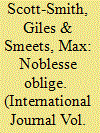

|
|
|
|
|
| Publication |
2013.
|
| Summary/Abstract |
In the late 1990s the Dutch government under Labour minister-president
Wim Kok decided to pursue a replacement for the main strike fighter of the
Royal Netherlands Air Force (RNAF), the F-16. From very early on, there
was a strong preference for the F-35 Joint Strike Fighter (JSF). This position
has held through the subsequent seven governing coalitions, even though
the political balance on the issue has fluctuated over time. Politicians have
presented the decision to participate in the JSF development program as an
entirely separate issue from that of replacing the F-16. Every government
since 1996 has insisted in public that the one issue does not necessarily lead
to the other, even though this has become an increasingly untenable division
to maintain.
|
|
|
|
|
|
|
|
|
|
|
|
|
|
|
|
| 5 |
ID:
121245
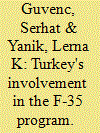

|
|
|
|
|
| Publication |
2013.
|
| Summary/Abstract |
Turkey has been involved in the international consortium that builds the
F-35 Joint Strike Fighter (JSF) since 1999. The relationship between Turkey
and the consortium may appear to be rocky, however, because of Turkey's
many hesitations to commit to the JSF program. In this article we argue that
these hesitations are strategic, designed to extract maximum benefits for
Turkey's defence industry from the consortium manufacturing the fighter
jets. For in addition to wanting to buy these fighter jets, Turkey seeks to
maximize the amount of local work-share to secure access to the software
of the aircraft, and to accumulate enough experience that will eventually
lead to designing and manufacturing a "fully indigenous" combat aircraft.
|
|
|
|
|
|
|
|
|
|
|
|
|
|
|
|